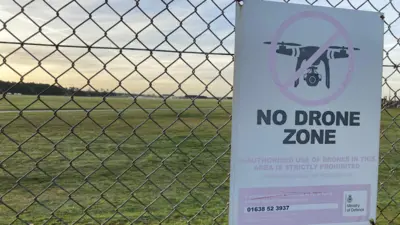We've updated our Privacy and Cookies Policy
We've made some important changes to our Privacy and Cookies Policy and we want you to know what this means for you and your data.
Key factors for Pakistan crash probe
Image source, AP
As Pakistan authorities launch an investigation into the crash of the Airblue Airbus A321 near Islamabad, Jim Ferguson, an aviation expert based in Aberdeen, Scotland, discusses some of the possible scenarios.
Top Stories
Bad weather
"Until the plane's 'black box' flight recorders are found, we simply will not know what caused this crash. There are so many unanswered questions.
It could be a combination of many things. But from the reports I have seen, the weather could be the villain of the piece. If you've ever been in monsoon rain, you know how serious it is.
Top Stories
But whatever the weather, this is an accident which should not have happened. Monsoons happen every year in Pakistan - they are nothing new to aviation.
So my first question is: Was this plane trying to land in weather conditions which were below the agreed minimum for the aircraft? And did the pilot have any other option?
It would have been up to the crew to make a decision about whether or not to land. Because no matter the weather, the airport would have remained open.
We need to know what the actual weather was at the time of the crash. What was the visibility? Was there fog? Was there a cross wind? Was there any wind shear or nasty microbursts (downdrafts) hidden in the monsoon?
And it would be useful to know what Airblue's minimum conditions for landing were. I would guess a visibility of half a mile and a cloud base of 500ft. But that is a guess.
Throughout the journey, the crew should have been given regular weather updates. Each time they have to decide - is it worth continuing?
We don't know what information the crew had been given. But the Pakistani authorities will be wanting to know why the aircraft took off from Karachi in the first place.
Were the crew unwise to do so? And were they unwise to continue?"
Fuel shortage
Top Stories
"The bad weather in Islamabad begs the question: Did the aircraft have enough fuel to divert to another airport?
A plane should always carry enough fuel to reach its destination, plus an allowance for circling and enough spare fuel to reach a nominated alternative airport.
Karachi to Islamabad is around two hours flying time, so the pilot may not have had enough fuel for a round trip. But they should certainly have had enough to divert."
Navigational error
"Was this a navigational error by the pilot?
Some reports indicate the plane may have been circling before an attempt to land. If so, was this its first attempt?
I have to assume that it was. Because I haven't heard any reports of an overshoot.
It is possible that the plane had already made an approach, taken a look and thought - I don't fancy that, and gone for another circle. But nobody has said anything yet about an aborted landing procedure.
If you are going to circle for a while, there is a safety height below which you should not descend. Usually it is the height of the tallest nearby hill, plus a couple of thousand feet for clearance. Was the plane below that height? And if so, why?
To help the pilot navigate, we know there are a couple of navigation beacons around Islamabad. But we do not know if there is an instrument landing system. If there is, was it working? Was it affected by the heavy monsoon rain?"
Technical failure
"Was there a problem with the plane's navigational systems?
The Airbus is a complicated aeroplane and it doesn't let people down. Not often anyway. Everything should work, no matter the weather.
To measure your altitude, the plane has a barometric altimeter, which you set to local pressure. You should also have a radar altimeter, and a ground proximity warning system (GPWS) which tells you 'Pull up. Pull up'.
When it says that, you put the throttles forward and climb like a homesick angel. You've got to otherwise you're going to wrap yourself around a hill.
The system is quite unreal. You can input the details of your whole flight when you take off - all the beacons and the heights you want to do - and sit back and let the plane do it for you. But in bad weather like that, most guys would be going for it hands on.
As for the airline's safety record, this appears to be the first major accident that Airblue have had."
Top Stories
More to explore
Most read
Content is not available








